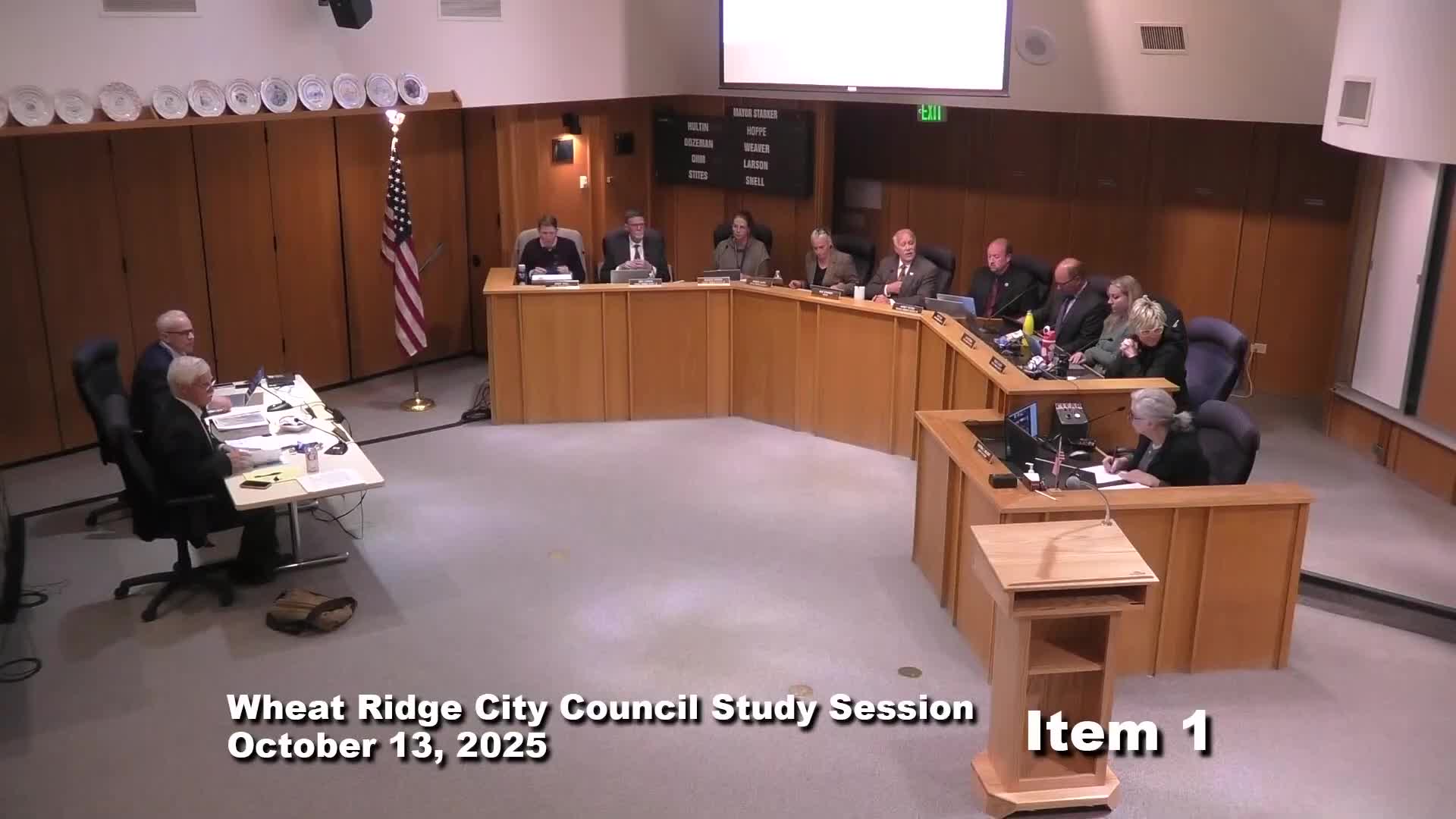Wheat Ridge council gets feasibility study on stormwater utility; agrees to begin public process
October 14, 2025 | Wheat Ridge City, Jefferson County, Colorado
This article was created by AI summarizing key points discussed. AI makes mistakes, so for full details and context, please refer to the video of the full meeting. Please report any errors so we can fix them. Report an error »

Jennifer Tedantzis, vice president with Bratellis Financial Consultants, presented a stormwater utility feasibility study to the City of Wheat Ridge City Council during a special study session on Oct. 13, outlining capital and operations needs and a proposed rate structure.
"The cost of service analysis models inflation, the use of debt, and reserves," Tedantzis said, summarizing the study, which identified roughly $35 million in 10‑year capital improvement project costs and about $2 million per year in operations and maintenance needs. The consultants measured impervious area across the city and set the equivalent residential unit (ERU) at 3,800 square feet of impervious area.
The study modeled a fee schedule that begins at $10 per single‑family residential ERU per month and increases to $17 per month over a 10‑year planning horizon to support the capital program and operations. For non‑single‑family properties, fees would be proportional to measured impervious area; the consultants provided examples showing how fees would apply to a pharmacy, a small business, an apartment complex and a large shopping center.
Councilmembers asked about credits and concerns that recent xeriscaping could affect impervious calculations. Tedantzis said credit or incentive programs for properties with robust on‑site stormwater management are common and could be designed in the implementation phase. Staff and the consultant said detailed parcel‑level impervious mapping and billing policies would be developed during implementation.
After questions from councilmembers, Councilmember Janice Hoppe asked for consensus to begin implementation work and public outreach; the council reached consensus to proceed with starting the implementation process and a public communication plan. Councilmembers said the implementation timeline would likely take nine to 12 months and noted the need for detailed outreach, clear appeals processes for billing and consideration of credits for properties with advanced stormwater controls.
No ordinance or rate was adopted at the Oct. 13 study session. Councilmembers and staff agreed to proceed with additional data development, billing policy decisions, and community engagement before returning to the council with specific rate proposals.
"The cost of service analysis models inflation, the use of debt, and reserves," Tedantzis said, summarizing the study, which identified roughly $35 million in 10‑year capital improvement project costs and about $2 million per year in operations and maintenance needs. The consultants measured impervious area across the city and set the equivalent residential unit (ERU) at 3,800 square feet of impervious area.
The study modeled a fee schedule that begins at $10 per single‑family residential ERU per month and increases to $17 per month over a 10‑year planning horizon to support the capital program and operations. For non‑single‑family properties, fees would be proportional to measured impervious area; the consultants provided examples showing how fees would apply to a pharmacy, a small business, an apartment complex and a large shopping center.
Councilmembers asked about credits and concerns that recent xeriscaping could affect impervious calculations. Tedantzis said credit or incentive programs for properties with robust on‑site stormwater management are common and could be designed in the implementation phase. Staff and the consultant said detailed parcel‑level impervious mapping and billing policies would be developed during implementation.
After questions from councilmembers, Councilmember Janice Hoppe asked for consensus to begin implementation work and public outreach; the council reached consensus to proceed with starting the implementation process and a public communication plan. Councilmembers said the implementation timeline would likely take nine to 12 months and noted the need for detailed outreach, clear appeals processes for billing and consideration of credits for properties with advanced stormwater controls.
No ordinance or rate was adopted at the Oct. 13 study session. Councilmembers and staff agreed to proceed with additional data development, billing policy decisions, and community engagement before returning to the council with specific rate proposals.
View full meeting
This article is based on a recent meeting—watch the full video and explore the complete transcript for deeper insights into the discussion.
View full meeting
